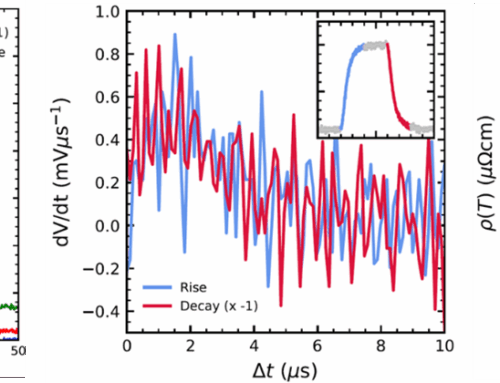Amit Pawbake and Clément Faugeras, LNCMI Grenoble.
Spin waves (magnons) in magnetically ordered solids – ferromagnets or antiferromagnets – are collective excitations of an ensemble of spins. They propagate in the solid and do couple to phonons of the host material to create new quasiparticles named magnon-polarons. This coupling is of prime importance as it defines the properties of magnons, which are at the heart of spintronics. This coupling and the resonant nature of the magnon-phonon interaction is best evidenced when the energies of the two excitations are in resonance. In the case of antiferromagnetic materials, this specific condition can be achieved by tuning the magnon energy with an external magnetic field. The magnon double degeneracy is then lifted and one of the two magnon components has an energy that increases with the external magnetic field due to the Zeeman contribution, allowing to explore the higher energy range, while the other component has an energy that decreases with magnetic field. In this work, we use high-pressure environments to tune the phonon spectrum through the magnon to observe a new case of magnon-polarons for which the created quasiparticle involves a phonon and a doubly degenerate antiferromagnetic magnon. In bulk FePS3, a layered antiferromagnet, we show that the magnon energy does not depend, in first approximation, on the applied hydrostatic pressure. We understand this surprising behavior as resulting from the strong in-plane magnetic exchange constant with respect to the interlayer one. The in-plane degrees of freedom of this layered magnetic system appear to be very weakly altered by the external pressure, while phonons are very sensitive to any deformation and are efficiently tuned through the magnon excitations. At a pressure of 3 GPa, we reach the resonance condition and we observe a strong avoided crossing involving three modes. The character of these different modes can be determined by applying an external magnetic field, which disentangles the hybrid excitations by tuning the magnon energy. These results are presented in the Figure in the form of false-color plots of the magneto-Raman scattering response for different pressures for which the P3 phonon has an energy below, in resonance with, and above the magnon energy. Combining different extreme environments opens new possibilities in solid-state physics and allows exploring the properties of electronic and magnetic systems in an original way, providing new information and insights into the phase diagram and the physics of such systems.

Figure: (a-n) Left: false-color map of the low-temperature magneto-Raman scattering response of bulk FePS3 at selected applied pressures showing the evolution of magnon-polarons for various magnon-phonon energy detuning. Right: Evolution of the energies of the excitations observed in the Raman scattering response with magnetic field (black dots) and results of our model (red solid lines) allowing us to extract the evolution of the coupling parameters.
High-Pressure Tuning of Magnon-Polarons in the Layered Antiferromagnet FePS3, A. Pawbake, T. Pelini, A. Delhomme, D. Romanin, D. Vaclavkova, G. Martinez, M. Calandra, M.-A. Measson, M. Veis, M. Potemski, M. Orlita, and C. Faugeras, ACS Nano 16, 12656 (2022).
https://pubs.acs.org/doi/10.1021/acsnano.2c04286
Contact: clement.faugeras@lncmi.cnrs.fr






